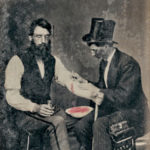Insane asylums were initially embraced because they held out the hope of curing the insane, rather than merely incarcerating them. Recovery rates were high at first, in the typically small asylums where doctors could devote themselves to patient care and set up individualized plans.
That initial hope gave way to pessimism, however, as institutions became larger and alienists (psychiatrists) found themselves as involved in administration as in practicing medicine. When noted 19th-century alienist and asylum superintendent, Pliny Earle, showed that earlier “cure rates” had been inflated, alienists everywhere accepted the fact that most of their patients were not going to recover, after all.
However, the new pessimism was almost as unwarranted as the earlier enthusiasm. One of the field’s few longitudinal studies showed that there could indeed be hope for patients. Between 1858 and 1870, Arthur Mitchell studied 1,297 patients in a Scottish asylum. He found that 53% either stayed resident at the asylum or died there during the time involved, but that nearly half of the discharged remainder (44.9%) had remained sane. This “half of the remaining half” only represents a cure rate of about 25%, but that rate might really have been higher; Mitchell could not get information concerning 32% of the discharged patients. Similarly, Dr. John G. Park of the Worcester State Lunatic Hospital, followed discharged patients for nearly 15 years in the late 1800s and found that more than half (58%) of those who had been discharged as recovered were never again institutionalized. This may not have meant that the discharged patients never had further psychological problems, but it did show that they had been able to function suitably enough to let them remain with family or friends.








